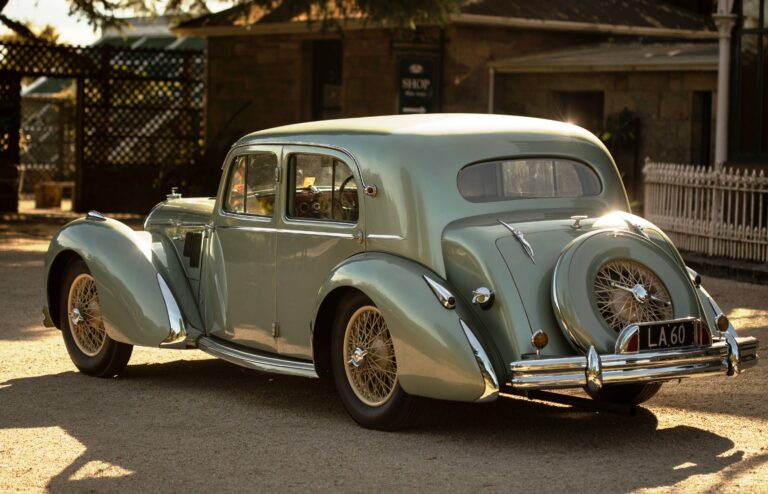Cadillac became one of the great luxury marques but it was a focus on quality and practicality in its humble beginnings that set its makers on the right path
Words and photography by Aaron Mai
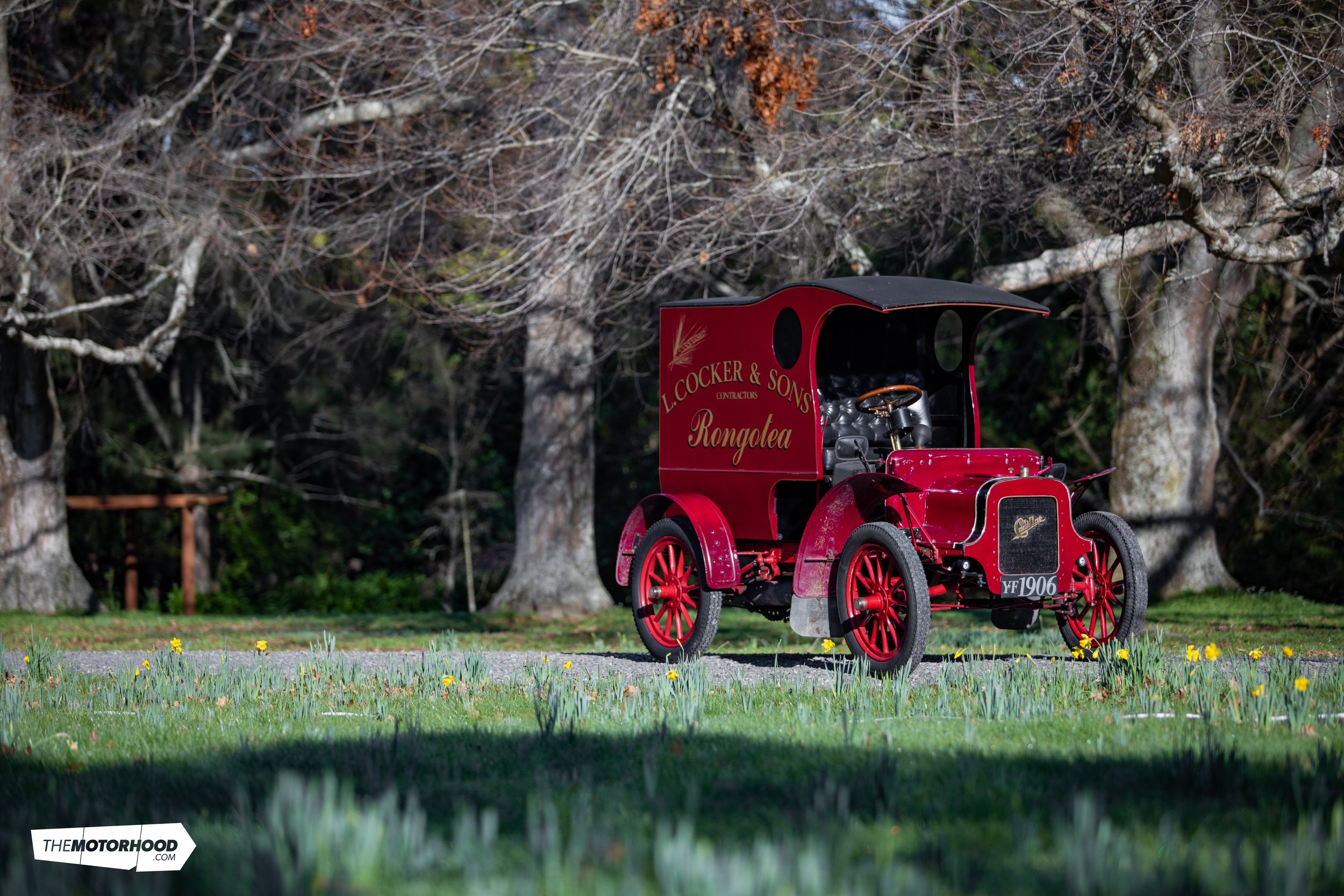
Think Cadillac and most of us will picture its over-the-top ’50s models, with shark fins, bullet-shaped tail lights, curvy bodywork, and lashing of chrome and whitewall tyres, but the history of this luxury brand stretches back to 1902. A pint-sized piece of that early history lives right here in New Zealand. Laurie Cocker’s 1906 Cadillac Model M delivery wagon may be pushing 115 years, but it remains a proud reminder of Henry M Leland’s early ambitions.
Henry M Leland’s early ambitions. What would become a core General Motors brand rose like a Phoenix from the ashes of the original Henry Ford Company. Henry and a handful of key staff left the company in 1902, just a year after its founding. The Cadillac story began when Ford’s backers William Murphy and Lemuel Bowen had engineer Henry M Leland appraise the Ford motor plant in preparation for liquidating the company’s assets. Leland persuaded the backers to continue manufacturing cars rather than sell everything up.
Leland had an unused single-cylinder engine design for Oldsmobile sitting at the ready. It boasted impressive power and reliability and was cheap to manufacture, making it a practical foundation for a new automobile. William and Lemuel agreed, and on 22 August 1902, the company was reorganised under the name Cadillac, in honour of Antoine Laumet de La Mothe Cadillac, the French explorer who founded the city of Detroit.
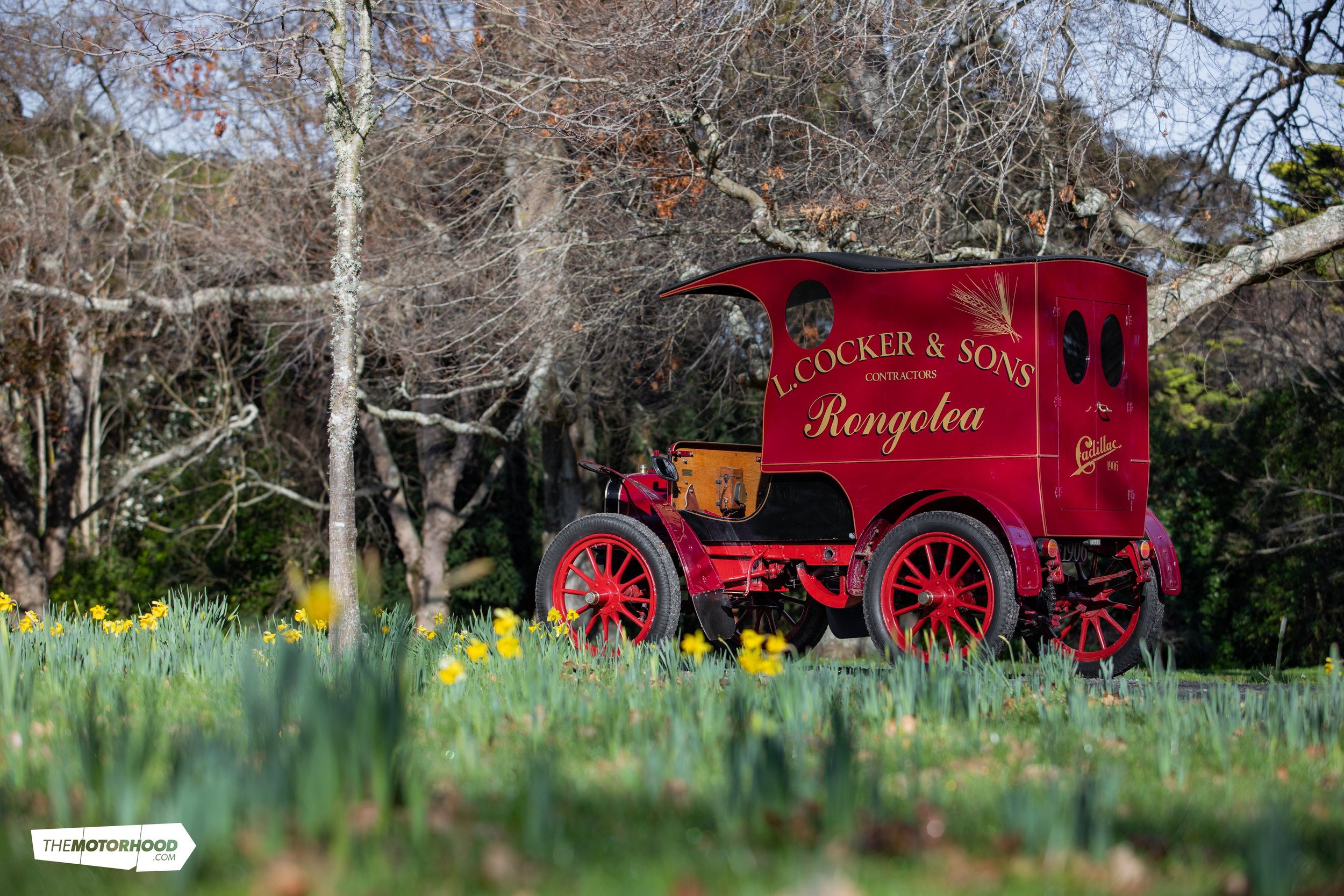
Little Hercules
While Cadillac is credited with setting the pattern for the all-conquering V8, the earliest Cadillacs were small runabouts and touring cars powered by the single-cylinder ‘Little Hercules’ engine, originally developed by Leland and Faulconer Engineering for Ransom E Olds. The engine was further refined, then centrally mounted beneath the car, putting power down via a chain drive rear axle. They were built in single-cylinder form from 1902 to 1908. These cars proved quite robust, and were built to a very high standard of quality for their day. Continual refinement led to the Models K and M of 1906, which retained the single-cylinder engine and were available as either a light runabout, touring car or panel delivery.
About 26,000 examples in various body configurations were produced by Cadillac. With the chassis, engine and transmission remaining the same, the cars were famed for being able to interchange body styles and parts. This little pearl of functionality has become extremely useful for today’s owners and restorers resulting in 26 similar-yet-different variants currently in New Zealand.
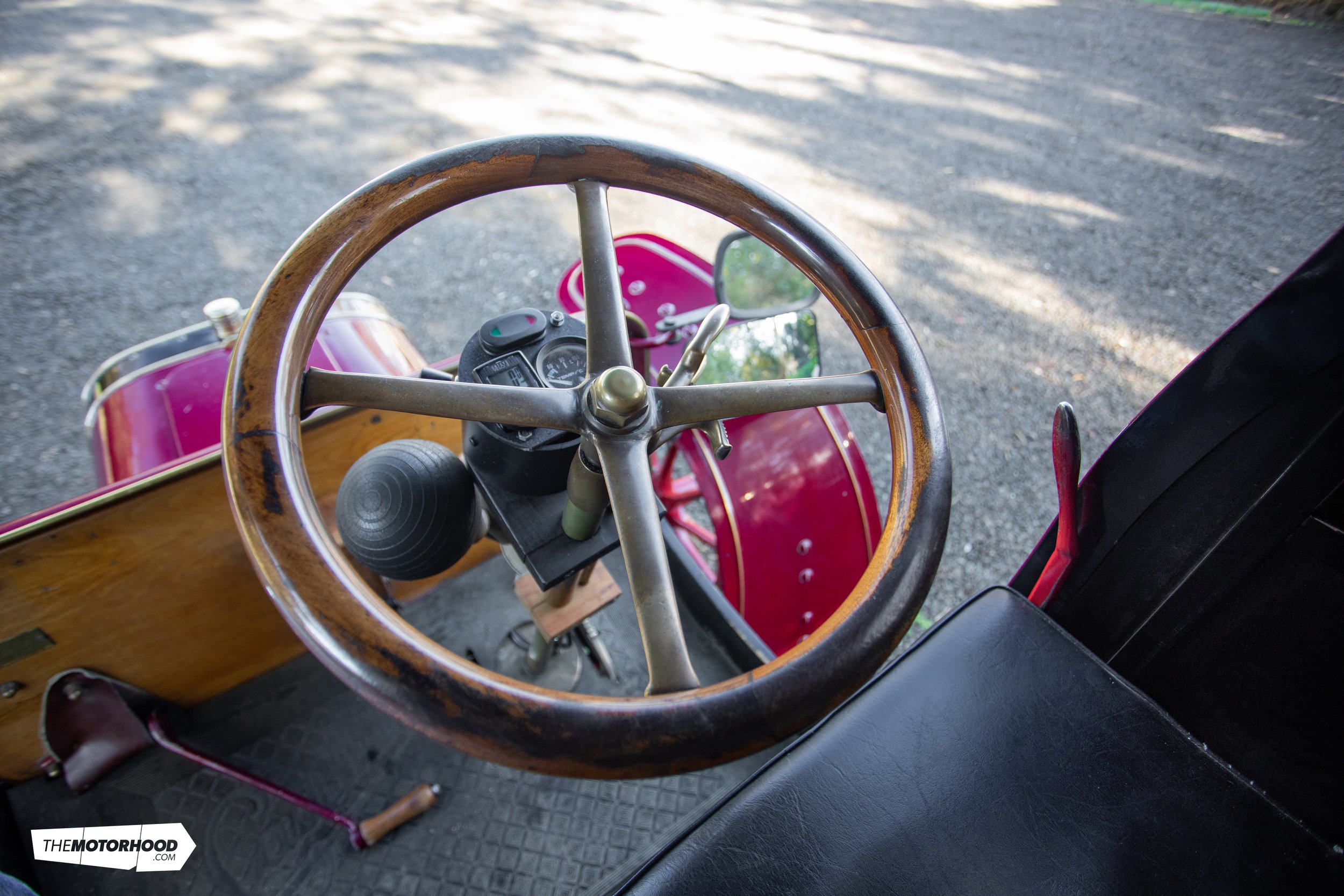
This particular Cadillac is a genuine piece of New Zealand motoring history, having found its way to New Zealand as a brand-new car in 1906. It spent its early life fitted out as a tonneau example with a folding rear seat, and it remained this way until 1990. It was at this time that the Caddy and its current owner, Laurie Cocker, crossed paths after he had acquired it through an estate sale. The Cadillac was showing its age, and the tonneau had seen better days. Laurie decided to remove the tonneau and installed a small rear deck, and then set about making the car more reliable.

First Get to the Farm Gate
wooden wheels to bring them up to standard for the busy driving schedule he envisaged in the car’s future. While this happened, the chassis was stripped back and received a fresh lick of paint. While the body was off and the chassis was being prepped, a new crankshaft, cylinder barrel, and piston were cast off original parts to freshen up the motor before the reassembly took place. After it was able to drive reliably past the farm gate, Laurie started work on a new body that would purpose the car for hauling around everything from tools to a tea thermos. He installed a panel delivery body onto the chassis as per the alternative variant offered on the Model M in 1906. It was then painted in a luxurious deep magenta, which ensures the Caddy can turn heads again on the country roads of the Manawatū.
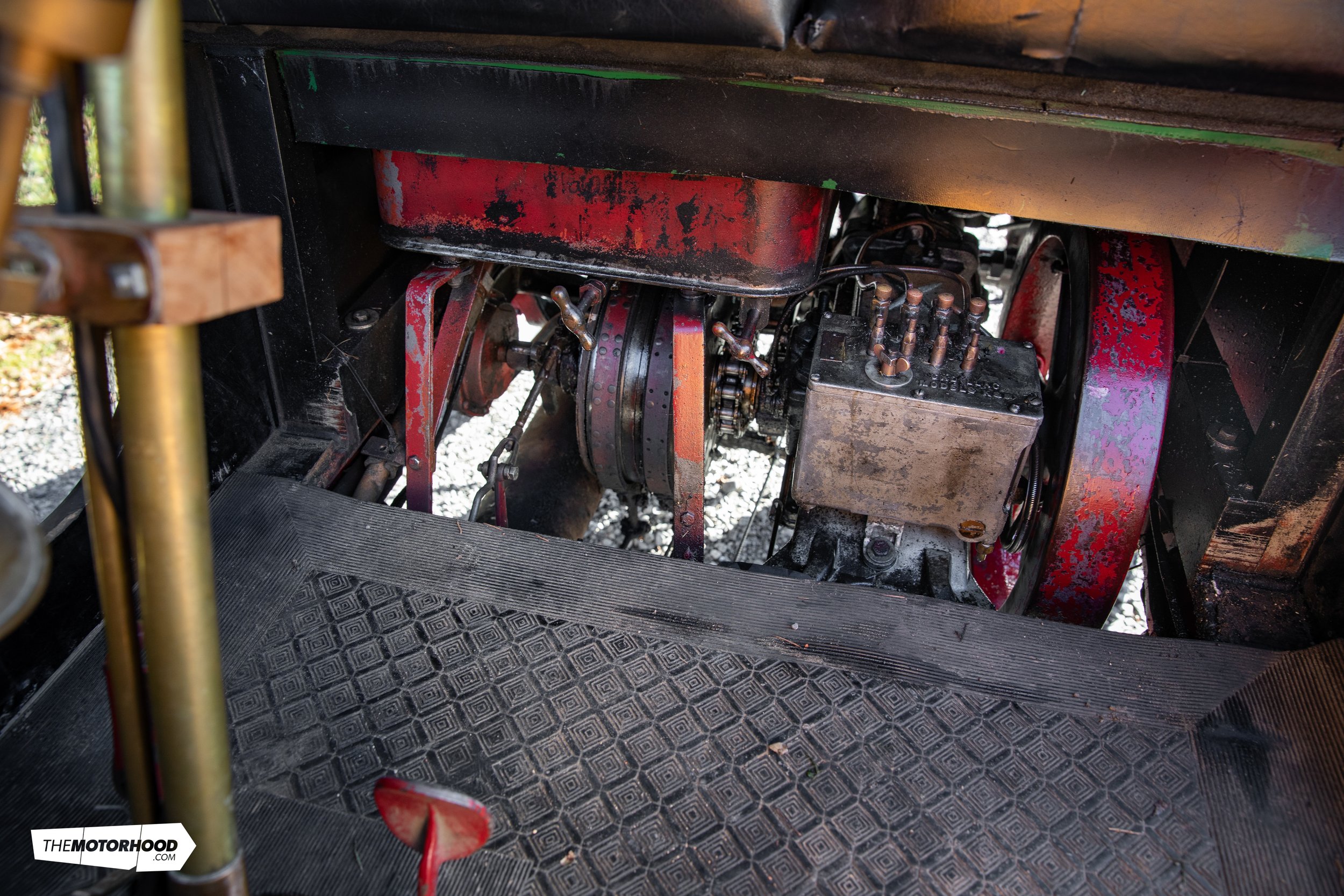
The single-cylinder 1609cc engine with a five-inch bore and stroke is mated to a two-speed planetary transmission just as it was 115 years ago. The Cadillac’s low gearing is courtesy of a band that tightens around the planetary transmission drum, while top speed is achieved from a clutch plate against the drum producing direct drive off the crank via a sprocket to the rear wheels. Climbing behind the steering wheel, you would be forgiven for a little head scratching after spotting only a single pedal, and a couple of levers. “The foot brake is on the right, and the left paddle is low forward, with the lever on the right to lock in for top. Pull the right-side lever back and you have reverse,” Laurie explains. Simple, right? Advance and retard on spark is done by hand via a lever on the steering column, as the Caddy uses a crank-start system located on the passenger’s side of the chassis.
The ‘Little Hercules’ also sports a variable-timed inlet valve, which is now commonplace on many modern Japanese cars. Lubrication of the engine is achieved by a total-loss system. After oil is pumped to the mains, big end, and piston it then goes to waste, meaning regular checks on oil levels are required among the car’s weekly outings.

Miles not Trouble-Free
This is all put to work delivering a respectable and comfortable cruising speed of 55kph at 1500rpm, with the Caddy running an also fairly modern 10km per litre. As the car is being driven weekly, Laurie has added daytime driving lights and indicators, which have helped him clock up 85,000 miles. “Those miles were totally not trouble-free though,” says Laurie. The car has used two crankshafts and a bit of rubber, yet has travelled from Rongotea to Bluff and back six times, and to Cape Reinga twice under its own steam. To ensure the Cadillac had seen all corners of New Zealand, it also departed Rongotea to visit the East Cape and New Plymouth, as well as a jaunt down Ninety Mile Beach. It has even proved it’s worth mucking in on the farm after Laurie’s ute broke down, becoming a calf milk transporter for three weeks.

Laurie clearly likes the change of pace delivered by his century-plus motor car. “It is great to take out on the weekend for a drive and a cup of tea,” he says. A short jaunt from home to Mt Lees Reserve to enjoy the sunshine and a tiki tour is the perfect excursion for the car. Throughout three decades of owning the car, Laurie has made contacts with people from all around the world, bound by a mutual appreciation for the cars. This humble little Cadillac reminds us how far cars have come but also how little has changed — how the essence of practical motoring was hit upon so long ago.
While it may be 115 years young, there are no plans to park it up just yet — there are so many more second glances to be won on the byways of the Manawatū and further afield, and plenty more sunshine to enjoy.
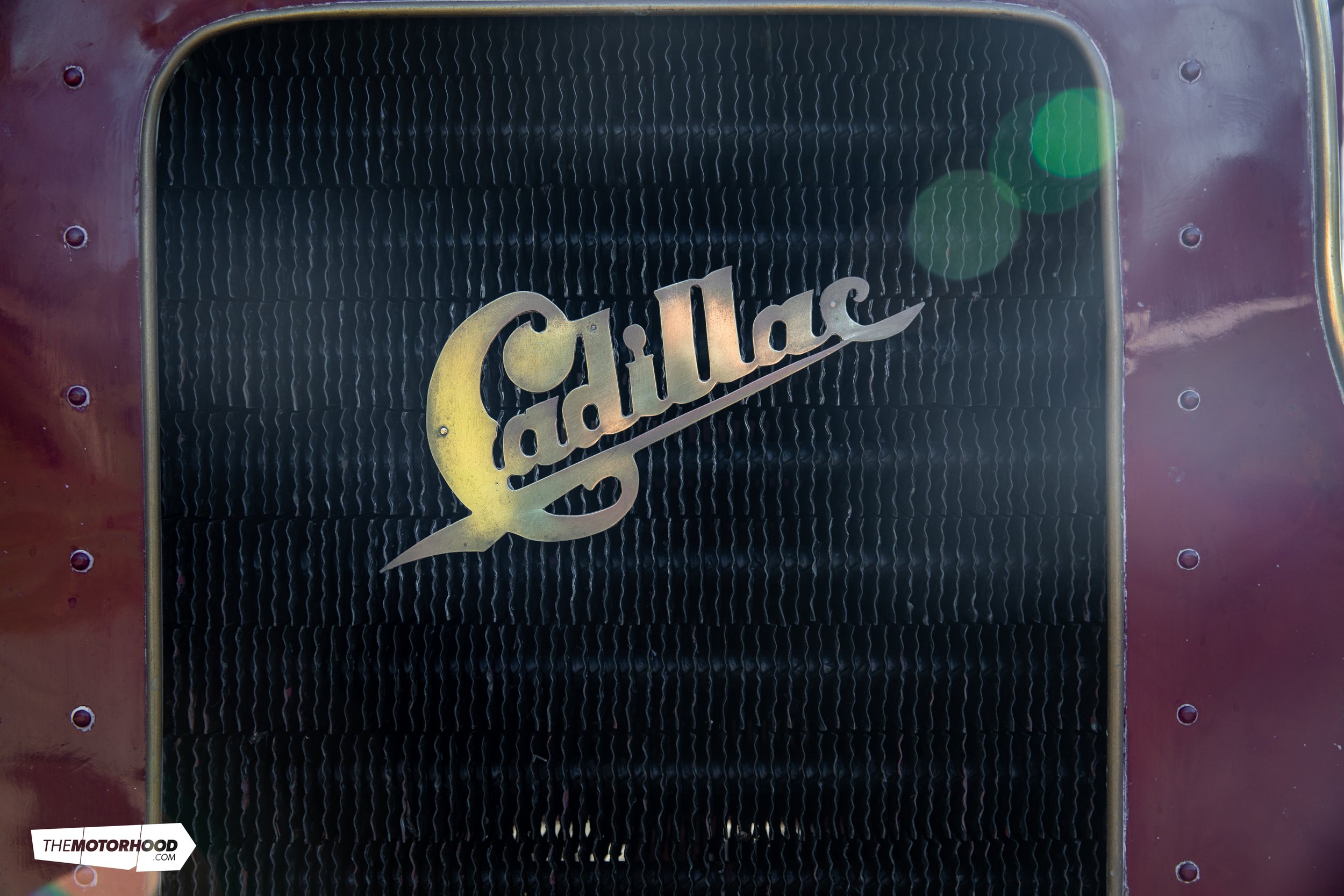
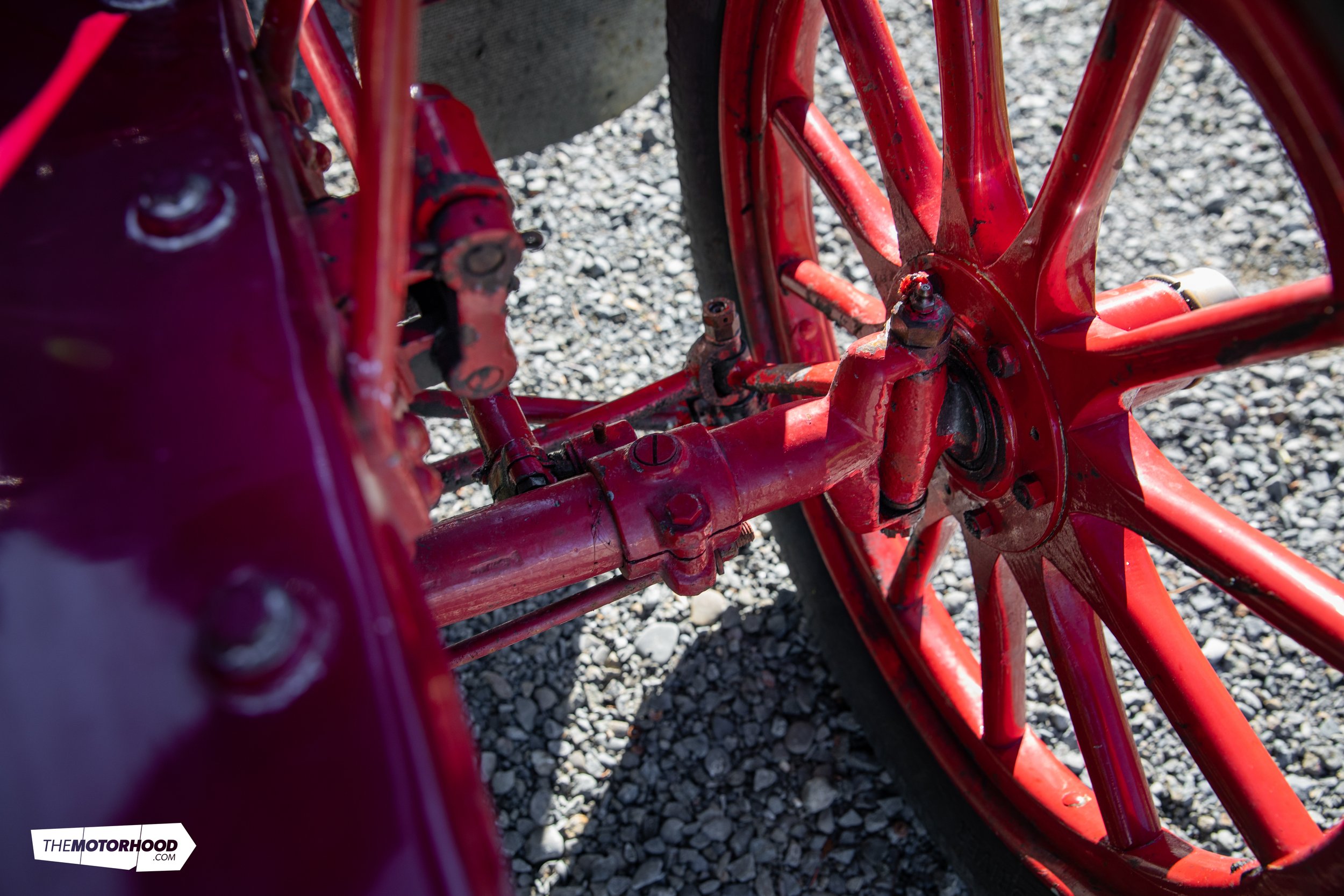
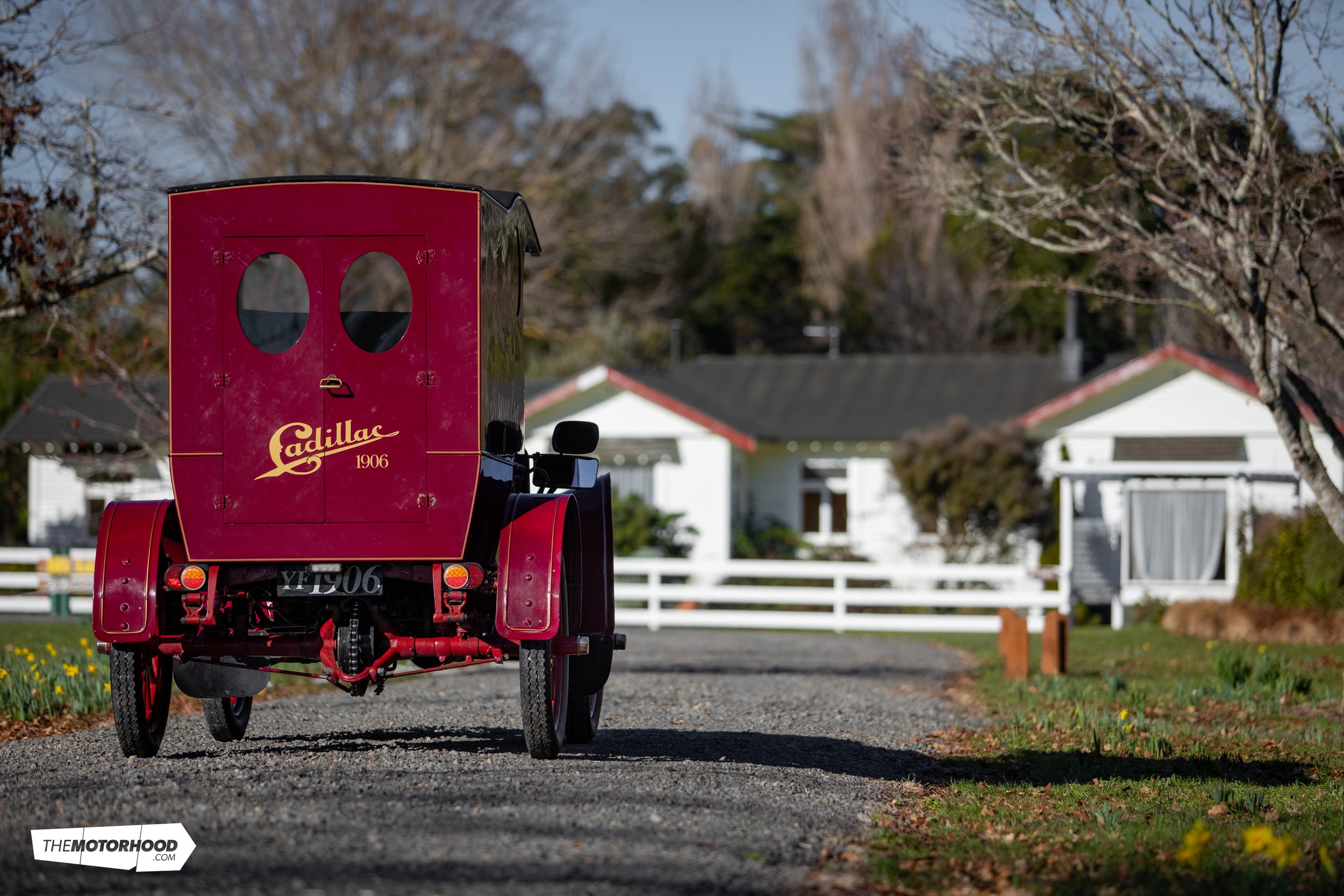
This article originally appeared in NZCC issue No. 373

